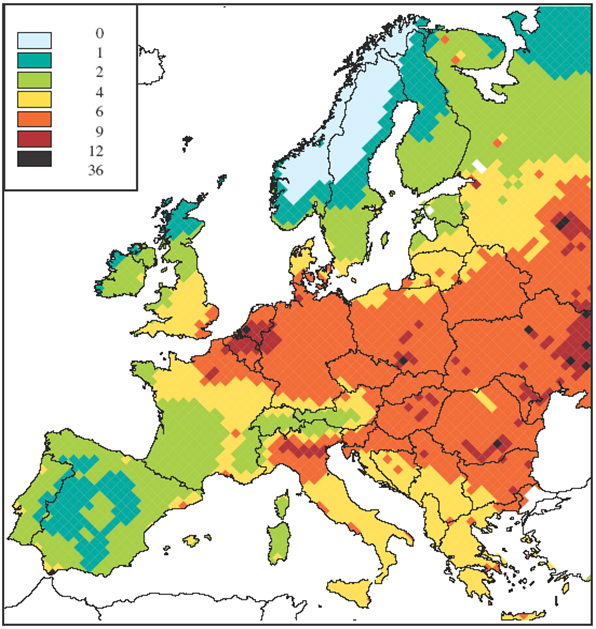Health effects of particulate matter: is there a decreased life expectancy?
The finer a particle is, the deeper it can penetrate the human body via the pulmonary tract. The finest particles can even reach the cardiovascular system. PM10 can disturb the mucous secretionl in the respiration system, cause breathing problems and increase the susceptibility to infections of the respiratory tract.The presence of polycyclic armoatic carbohydrates (PAC) in some dust particles does, amongst others, promote the development of lung cancer. Other toxic substance found in particulate matter can, after deposition in the lungs, spread further in the (human) body via the vascular and/or lymphatic system. The risk of experiencing a heart attack also increases by exposure to high peak concentrations of particulate matter. Ultrafine particles (UFP or PM0.1) penetrate further into the lungs than larger particles, have a larger surface area per volume and can reach the vascular system directly. There is a still increasing amount of clues that UFP (mainly the particles originating from exhausts of traffic-related combustion processes) can cause health problems. It is however still unclear which mechanisms are behind these health effect.
The World Health Organisation (WHO) postulates that short exposure to high concentrations of particulate matter (short term exposure) may have following effects: inflammation of lung tissue, effects on the respiratory tract, detrimental effects on the cardiovascular system, an increase in the use of medication, hospitalisation and mortality. People with respiratory diseases, such as asthma, chronic obstructive pulmonary disease (COPD), heart problems, but also elderly people and children are considered risk groups.
Also long term exposure to lower concentrations of particulate matter may cause negative health effects (long term effects). The WHO poses there is an increased risk for respiratory diseases and decreased life expectancy as a consequence of cardiopulmonary (heart and lungs) mortality and probably also as a consequence of lung cancer. These effects are more pronounced in elderly people, children or persons with heart, immunity or respiratory afflictions.
Framed in the CAFE programme (Clean Air For Europe), it was calculated that in the year 2000, the life expectancy in the EU decreased with 8 months on average due to PM2.5 exposure. For Flanders, the loss of life expectancy due to chronic health effects of PM2.5 was even larger, with a decrease of 1 healthy year. In Scandinavia, the decrease in life expectancy is the smallest.
From an American study, it appears life expectancy increases again when concentrations of particulate matter decrease.

Figure: The number of months of life expectancy decrease caused by PM2.5 in 2010. This estimation was based on model results, not measurements!
